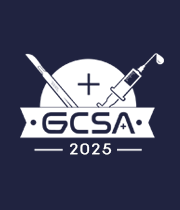Title : Pathological response-based analysis of optimal lymph node dissection after neoadjuvant therapy in esophageal squamous cell carcinoma
Abstract:
Purpose: The optimal extent of lymph node (LN) dissection after neoadjuvant therapy in esophageal squamous cell carcinoma (ESCC) remains unclear, especially when comparing patients with pathological complete response (pCR) to those with residual disease (non-pCR). This study aimed to determine LN thresholds that maximize disease-free survival (DFS) in each subgroup.
Methods: A retrospective review was conducted across our centers, including 287 ESCC patients (220 non-pCR, 67 pCR) who underwent neoadjuvant therapy followed by R0 resection from April 2017 to December 2022. Cox proportional hazards regression was used to evaluate the relationship between LN yield and DFS. Locally weighted scatterplot smoothing (LOWESS) and Chow’s test were applied to identify structural breakpoints in LN dissection. Survival differences were assessed using Kaplan-Meier curves and the log-rank test.
Results: Breakpoints of 26 LNs for non-pCR and 18 LNs for pCR were identified. In the non-pCR group, dissecting more than 26 LNs significantly improved DFS compared with 26 or fewer (p = 0.034). Among pCR patients, dissecting more than 18 LNs conferred a significant DFS advantage (p < 0.0001). Multivariable Cox regression confirmed these thresholds as independent prognostic factors. Additionally, perineural invasion and ypN+ status were associated with worse DFS in non-pCR patients.
Conclusions: Optimal LN dissection thresholds following neoadjuvant therapy differ by pathological response in ESCC. Dissecting more than 18 LNs benefits pCR patients, whereas at least 26 LNs are necessary for non-pCR patients, underscoring a need for tailored surgical strategies based on pathological response.


